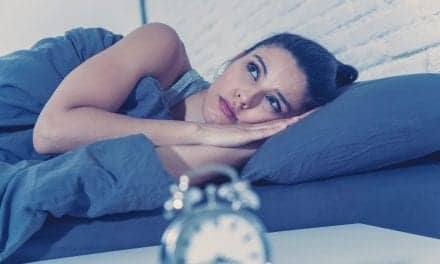The research emphasizes the importance of consistent exercise over time in combating insomnia, noting that the benefits diminish for those who initially engage in physical activity but later become inactive.
Summary: A 10-year international study finds that consistently exercising two to three times weekly significantly lowers the risk of insomnia and promotes normal sleep patterns. The research, involving 4,399 participants across nine European countries, revealed that persistent physical activity contributes to easier sleep initiation, fewer insomnia symptoms, and the ideal six to nine hours of sleep per night. The study underscores the critical role of sustained exercise for optimal sleep health, while noting that intermittent activity loses this beneficial effect.
Key Takeaways:
- Consistently exercising two to three times a week over a decade is linked to a significantly lower risk of developing insomnia and achieving the recommended six to nine hours of sleep nightly.
- The study involved 4,399 middle-aged adults from nine European countries, identifying a clear benefit of persistent physical activity on sleep quality and duration.
- Persistent exercisers were 42% less likely to struggle with falling asleep and 22% less likely to experience any insomnia symptoms, highlighting the importance of maintaining regular physical activity over time.
Consistently exercising two to three times a week over the long term is linked to a lower current risk of insomnia, as well as the ability to clock up the recommended six to nine hours of shut eye every night, suggests an international 10-year study published in BMJ Open.
Regular exercise is associated with better overall health, and several studies have suggested that physical activity promotes better quality sleep and may improve symptoms of chronic insomnia, note the researchers.
But it’s not entirely clear how much gender, age, weight (BMI), overall fitness, general health, and exercise type contribute to this association, they add.
Unpacking the Link Between Exercise and Sleep

To explore this further, the researchers assessed the frequency, duration, and intensity of weekly physical activity and symptoms of insomnia, nightly sleep clocked up, and daytime sleepiness among middle-aged adults from 21 centers in nine European countries.
The 4,399 study participants (2,085 men; 2,254 women) were drawn from the European Community Respiratory Health Survey.
They had answered questions on the frequency and duration of physical activity at baseline (ECRHS II;1998-2002) and on physical activity, insomnia symptoms (Basic Nordic Sleep Questionnaire; scale 1-5), sleep duration, and daytime sleepiness (Epworth Sleepiness Scale) 10 years later (ECRHS III; 2011-14).
Participants who reported exercising at least two or more times a week, for one hour/week or more, were classified as being physically active.
Activity Patterns and Sleep Outcomes

Over the 10-year period, 37% (1,601) of participants were persistently inactive; 18% (775) became physically active; 20% (881) became inactive; and 25% (1,082) were persistently active.
Participants in Norway were most likely to be persistently active, while participants in Spain, followed by Estonia, were most likely to be persistently inactive.
Persistently active participants were more likely to be men, younger, and to weigh slightly less. They were also less likely to be current smokers and more likely to be currently working.
After adjusting for age, sex, weight (BMI), smoking history, and study center, those who were persistently active were significantly (42%) less likely to find it difficult to fall asleep, 22% less likely to have any symptom of insomnia, and 40% less likely to report 2 or 3 (37% less likely) insomnia symptoms.
The Crucial Role of Consistency

Insomnia symptoms were also independently associated with age, female gender, and weight.
As for total nightly hours of sleep and daytime sleepiness, after adjusting for age, sex, weight, smoking history, and study center, persistently active participants were most likely to be normal sleepers while the persistently inactive were least likely to be in that category.
The persistently active were significantly (55%) more likely to be normal sleepers and significantly less likely (29%) to be short (six hours or less), and 52% less likely to be long, sleepers (nine hours or more). And those who became active were 21% more likely to be normal sleepers than those who were persistently inactive.
The researchers acknowledge that they weren’t able to objectively assess changes in physical activity levels between the two time points and that all the elements relied on subjective assessment via questionnaire.
But they nevertheless conclude in a release: “Our results are in line with previous studies that have shown the beneficial effect of [physical activity] on symptoms of insomnia, but the current study additionally shows the importance of consistency in exercising over time because the association was lost for initially active subjects who became inactive.”
Photo 105347342 © Erikreis | Dreamstime.com



